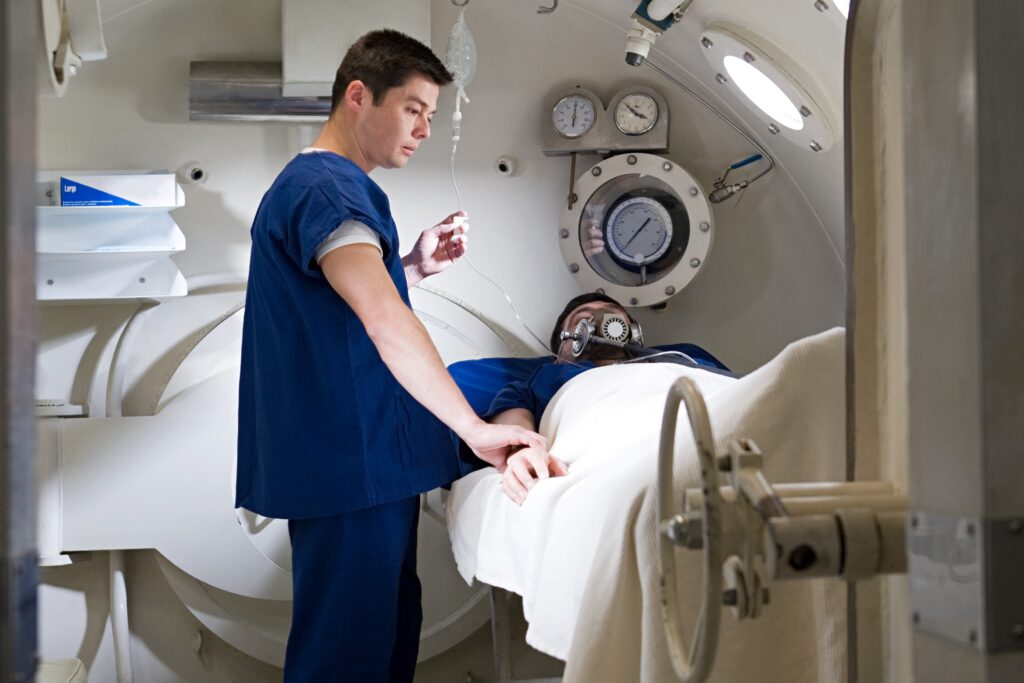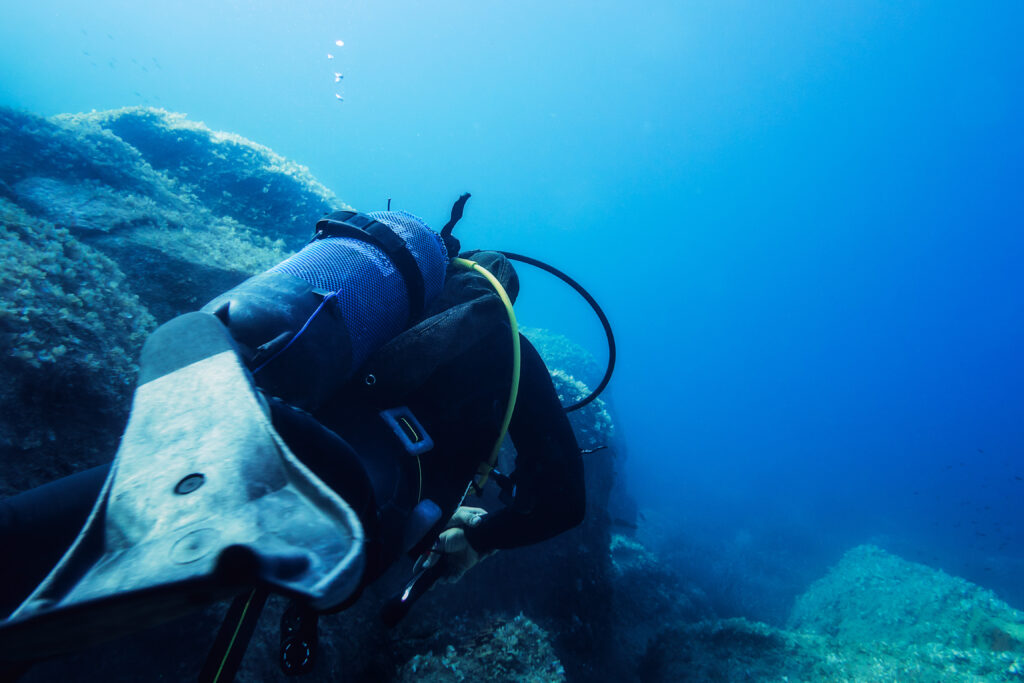What is a Decompression Chamber (Hyperbaric Chamber)?

A decompression chamber, also known as a hyperbaric chamber, is a large cylindrical tube designed to facilitate the gradual adjustment of deep-sea divers to normal air pressure.
What is a Hyperbaric Chamber?

What is a Hyperbaric Chamber? A hyperbaric chamber, also known as a decompression chamber, is an air-tight, pressure-controlled enclosure designed to simulate varying ambient pressures, either at altitude or at depth, for a range of medical, scientific, and diving-related applications. Hyperbaric chambers can be mobile or stationary and are operated by trained technicians. They consist […]
What is Decompression Sickness (DCS)?

What is Decompression Sickness (DCS)? Decompression sickness, commonly referred to as DCS or “the bends,” is a medical condition that occurs in scuba divers when they ascend too rapidly or fail to follow proper decompression procedures during their dive. The condition results from dissolved nitrogen gas leaving the body tissues and forming bubbles when the […]
What is Arterial Gas Embolism (AGE)?

Arterial Gas Embolism (AGE) is a potentially fatal complication that can occur during scuba diving, characterized by gas bubbles entering the arterial circulation. When these gas bubbles block blood vessels, particularly in the brain or heart, it can lead to immediate symptoms and rapid clinical deterioration.
What is Aggressive Decompression when Scuba Diving?

What is Aggressive Decompression when Scuba Diving? Aggressive decompression, a pivotal term within the realm of scuba diving, represents a decompression schedule intending to shorten overall decompression time for a given pre-ascent dive profile. This practice operates on a delicate balance, accepting the increased risk of decompression sickness to diminish overall ascent time, which can […]
What is Free Air?

Free air refers to air at atmospheric pressure, which is the pressure exerted by the weight of air in the Earth’s atmosphere. In the context of scuba diving, understanding the concept of free air is crucial for managing various aspects of dive planning and safety, including buoyancy, gas consumption, and decompression sickness. This entry will delve into the relationship between free air and compressed air, and how this understanding impacts diving practices.
What is a Gas Embolism?

A gas embolism is a serious medical condition that can occur when gas bubbles enter the bloodstream and obstruct blood vessels. This condition is particularly relevant to scuba divers due to the unique pressures and environments encountered underwater. When a diver ascends too quickly or experiences equipment failure, gas bubbles can form within the blood vessels, leading to potentially life-threatening complications. Understanding gas embolism within the context of scuba diving involves recognizing how these gas bubbles form, their impact on the body, and the measures necessary to prevent and treat this condition.
What is the Divers Alert Network (DAN)?

The Divers Alert Network (DAN) is a vital entity in the scuba diving community, dedicated to the safety and well-being of divers worldwide. Established to provide emergency medical advice and assistance, DAN has evolved into a comprehensive organization offering a range of services, including research, education, and insurance. With its global reach, DAN has become an indispensable resource for divers, ensuring that they have access to critical support and information, both in emergencies and for ongoing education. Its influence extends through various initiatives aimed at promoting safe diving practices and improving the overall safety of the diving environment.
What is Decompression Illness?

Decompression illness (DI) is a significant condition that affects scuba divers and can have serious health implications if not properly managed. It encompasses a range of ailments resulting from changes in pressure, particularly during ascent after a dive. Understanding decompression illness is crucial for divers, as it helps in preventing, recognizing, and treating this potentially life-threatening condition. This article will cover the physiology, types, causes, risk factors, prevention strategies, diagnosis, treatment, and implications of decompression illness.
What is a Wet Pot?

A Wet Pot is a specialized water-filled hyperbaric chamber used predominantly in experimental work, training, and as a transfer chamber in saturation diving systems. These chambers play a crucial role in the field of hyperbaric operations and scuba diving by providing a controlled environment for divers and researchers. In training scenarios, Wet Pots simulate underwater conditions, allowing divers to practice and prepare for real-life situations. In experimental contexts, they enable scientists to conduct research on the effects of pressure and gases on the human body and various materials. Furthermore, Wet Pots serve as transfer chambers in saturation systems, where they facilitate the safe removal and handling of wet equipment after deep dives. Their versatility and utility make Wet Pots an essential component of modern diving and hyperbaric practices.
